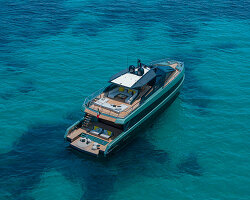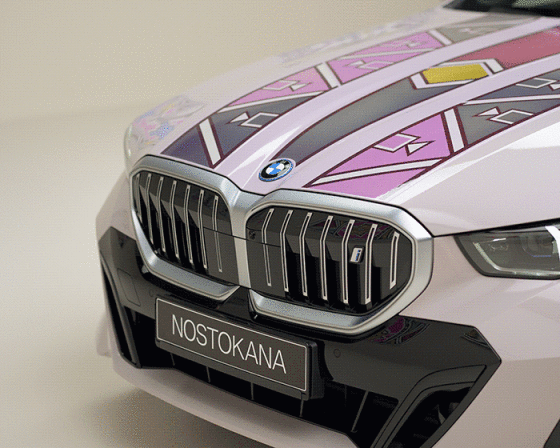
designboom sits down with CRN chief interior designer costanza pazzi
image © designboom
on the east coast of italy, there is a seaport city named ancona, where a discreetly hidden shipyard fuses hard metals with exotic fabrics to create floating palaces for the seas. since 1963 luxury mega yacht company CRN has been at this shipyard and continues to manufacture fully customized 40 to 90 meter long boats made of large slabs of steel and aluminum. in the almost 80,000 square meter facility, there is an office filled with fabric samples and interior renderings that is home to an outgoing and companionable woman named costanza pazzi. she is the head of interior designs at CRN, and she is known as the dream weaver. well that’s because the word ’no’, is not in her vocabulary when she’s receiving requests from powerful and wealthy owners. she listens, and makes magic happen in a world where industry regulations, budgets, and unforeseeable changes are met at every corner.

an original andy warhol hanging in ‘chopi chopi’
image courtesy of CRN
see more about CRN’s ‘chopi chopi’ on designboom here
mrs. pazzi started out as architecture graduate from florence university. she quickly continued her studies at école d’architecture de paris for yacht design where she stayed for two years, learning everything there is to know about interiors and exteriors. she finally finished all her education at the university politecnico in milan, where she crafted her art to the high standards of italian design. her first boat for CRN was the opulent 60 meter ‘darlings danama’, and since then has managed to complete some of the most spectacular interiors for the italian mega yacht company in its long history.

constanza’s first project, the upper deck of the ‘darling danama’
image courtesy of CRN
designboom visited the CRN shipyard and interviewed mrs. costanza pazzi, who told us about her background, the details of designing lavish yacht interiors and what the future of yachts really depend on.
designboom: how did you first start at CRN?
costanza pazzi: I started as just a project interior chief for only one boat. after doing a lot of boats, CRN trusted me with the responsibility of all the interiors of all the boats. I started in 2012, and since then CRN has given me a lot of opportunities to meet a lot of people and big architects. when I worked with architect andrew winch, that was a big surprise.

the floating garage the ‘j’ade’ positioned right next to the beech salon
image courtesy of CRN
see more about the ‘j’ade’ on designboom here
DB: when you were in architectural school, did you ever think that you’d be building yacht interiors?
CP: yes, I studied architecture, but I studied boat architecture for two years in paris; more specifically sail boats. I first started at adria sail, but I felt that working with CRN would be more of a challenge. I live on the adriatic coast, my father has a boat, so I pretty much grew up inside a boat.
DB: do you remember the first time you were on a boat?
CP: of course, very well because I have a scar from falling down through an open porthole to the engine room when I was two years old. this was my first experience with a boat. I travel a lot with my boat everywhere in the summer.

the spa on board the ‘jade’
image courtesy of CRN
DB: so is the love of being on a boat very contagious?
CP: oh yes. for three months of the summer, my father, me and my brothers always spend time on a boat, and this is probably why I chose this kind of work. I never put the same details into each project. each one is completely different, with new challenges and working with different architects. it’s not like a building. there are different rules, but the rules stay consistent. I’m very proud that each boat has different details and designs that improve my portfolio.

the ‘jade’ owner’s bathroom joined with the bedroom
image courtesy of CRN

bench by hervé van der straeten inside the master bedroom of the ‘jade’
image courtesy of CRN
DB: how does this design process start? walk us through the undertaking of creating the interior of a boat.
CP: in our initial meetings, we of course speak to the architects and the owner. I ask the owner to show me what he likes, but more specifically, what he likes in his own homes. then we ask, when they walk onto the boat, what kind of mood or sensation they want it to have. for example one boat was strictly for business, with specific details that offer no distractions. another was for charter, so they wanted all the cabins to have a completely different feel. another client asked for a relaxed ambiance, with complete minimalism.
I need these first impressions to understand what each client wants. if it’s for a family, I also ask the wife and the children, because with ‘chopi chopi’ for example, the children’s needs were very important to the owner. the boat needed to be a home for them. after that first initial meeting, depending if there is an architect brought in by the owner, which happens very often, they bring their own materials and templates. the kitchen is very important to the boat, and needs must be well incorporated, so we also need to speak to chef of the boat. we have a lot of different ‘actors’ with needs that need to be met.
we then finalize the renderings with the architect, and add some sample fabrics. this helps show the veneer and tactile sensations to the owner because sometimes, depending on the owner, they don’t want to touch veneer, and prefer to have a lacquer with a lot of fabric. other clients want materials with a lot of texture inside the boat. when it comes to the fabric, I choose materials one year after the first conversations, because in one year, the collections change very quickly. this I learned the hard way, as a fashion victim. after six months, things will be new, owners change their mind, and change collections. we include a lot of fabrics to give a sense of the color palette and mood. with all the details on the table, we finalize the executive drawings and engineering descriptions.
the accounting department enters the process at this point to emphasize budget concerns. this brings limits to the type of materials I can use. my boss and the accountants keep my ideas and drawings grounded. this is another aspect of my job. 70 percent is the selection of materials – to find everything to present to the owner – but another important thing is keeping in control of the budget. of course if the owner asks me for something lavish, it’ll be an extra. but I never have a problem, because if they really want it, they don’t care how much it costs.

the wheelhouse of the ‘j’ade’
image courtesy of CRN

constanza pazzi’s yacht interior sketches
image courtesy of CRN

interior ideas for presentation to the owner
image courtesy of CRN
DB: has that every happened, that you’ve showed renderings, but the owner doesn’t like them?
CP: depends, but that has happened. I had a client, where I worked for two months on the first five renderings, and he told me, ‘yes I like it, but it’s so cheap.’ so, then I had to ask more questions. the clients like this approach, because a lot of times they send me or give some pictures they have also seen in a catalogue, or a sample, to help me better understand what they want.

the extendable balcony on the ‘maraya’
image courtesy of CRN
DB: what was the craziest thing you’ve received, that you had to interpret into the designs?
CP: nothing crazy, but I get a lot of requests, that even after six years of working at CRN, don’t surprise me. I’ll give you an example: one owner asked me that the door handles in his room must cost at least €12,000 each. it was a curious request.
DB: any other strange requests?
CP: yes, I’ve been asked to focus an entire yacht on a dog. the dog was the most important ‘person’ on the boat. so they asked me to find all the essentials for the dog, like the bed and accessories. on ‘chopi chopi’, we made two cabins just for the china and cutlery, with electric drawers for the linen and table cloths. the two rooms were 50 square meters each. all the furniture on the boat — tables and chairs — were made completely custom. all the pieces have a story. I’ve also been asked to find all the sculptures and paintings for the yacht to finalize the overall ambiance of the space. some owners ask for specific artists, and I have to go find art to match the interior.

the 43 meter ‘navetta kate’, named after the owner’s dog
image courtesy of CRN
DB: so you had to visit art galleries as well?
CP: oh yes. I asked some galleries to help me because it wasn’t my forte, but I studied for that. so it’s another avenue in which my mind is opened creatively. it is difficult, because after we acquire the art pieces, the team puts all of them art into the renderings to show where we would preferably suggest to put the paintings and sculptures.
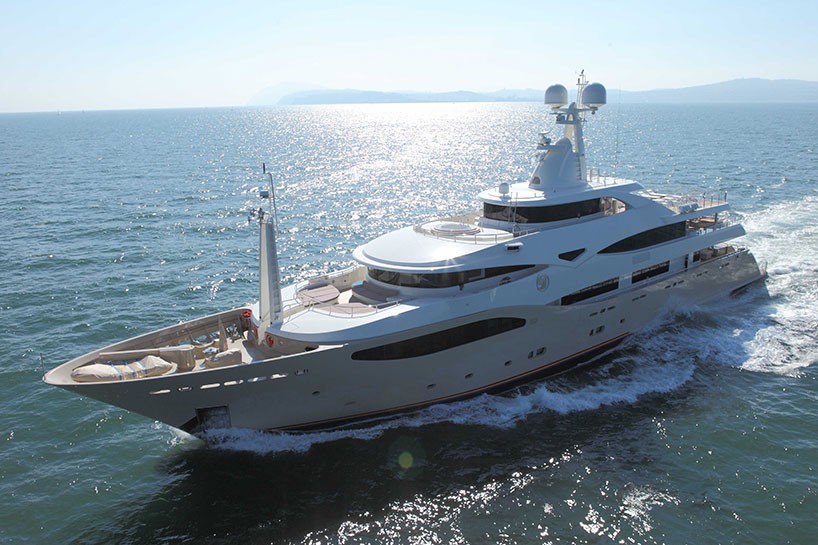
an exterior shot of the CRN 60 meter ‘darlings danama’
image courtesy of CRN
DB: when owners do give you creative freedom for the interiors, what industries influence you during the design process?
CP: every year with the CRN team we travel to paris, london, new york, and milan to visit various shows, and look at various store displays to keep our creative minds open, and assist our design development. this adds another dynamic to our challenges. our design team includes a lot of young creatives that help improve and change with the times. we love this work, with all of its dynamic variables.

the spa area of the ‘jade’
image courtesy of CRN
DB: then what do you imagine yachts being in ten years?
CP: this depends on the owners, and the age of the owner, because we’ve had very young owners with unique lifestyles that are filled with expeditions and adventures, who want very minimal interior and style. we also have owners with old old style that incorporates chandeliers and traditional pieces. at the moment, we have a lot of contemporary and minimal designs in our last three or four boats that we made. but I don’t know what in five to ten years owners will prefer.
I think that in naval architecture, the progress is very fast, only because we have a lot of demotic technology; all the controls now must connect to an iPad or smartphone. the new boats need to have the latest iPhone compatibility, so we have to wait to put the technology in the boats. same with televisions, because the owners want the latest ones. this problem covers everything, from the speakers to all the entertainment systems in the boat. these projects are always in progress. for me, definitely more changeable than creating buildings.

a look at one of the professional kitchens
image courtesy of CRN

the guest cabins features a full ensuite bathroom and storage space
image courtesy of CRN
DB: what advice to do you have to young creatives who want to get into the field of yacht design?
CP: try. try. study. study and push, because we need young people to continue this passion. we need creators and inventors because there are a variety of different requests.
DB: what’s your favorite part of being an interior yacht designer?
CP: when I see my boats in the water, at the day of the launch – that’s the best day. I get very emotional, and I cry every time. at the last launch, I invited the architect who helped us make the boat, and it was his first time designing with us. he was hesitant to come see the launch, but after some convincing, he came. he witnessed the launch and cried for an hour. seeing the yachts float away, is like letting go of a baby every single time.

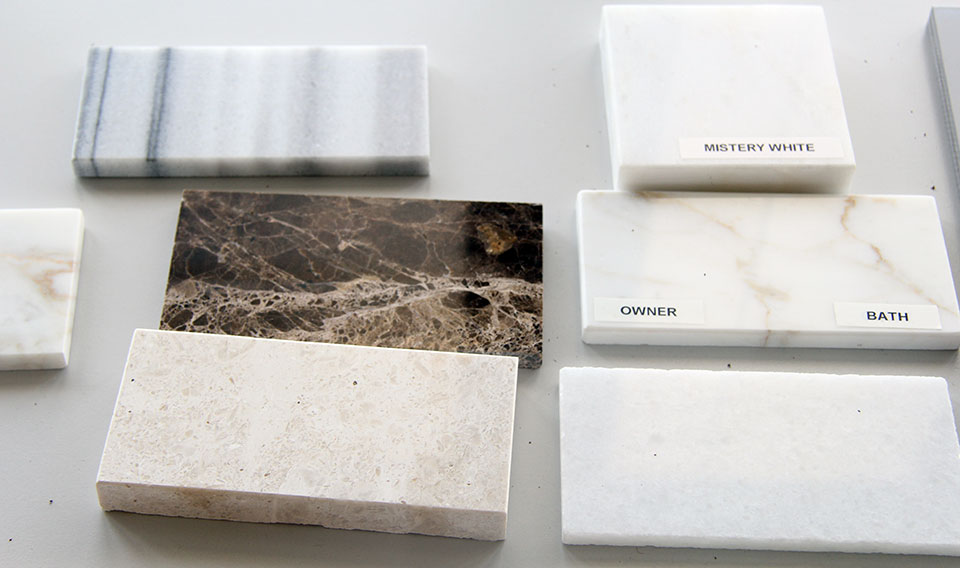




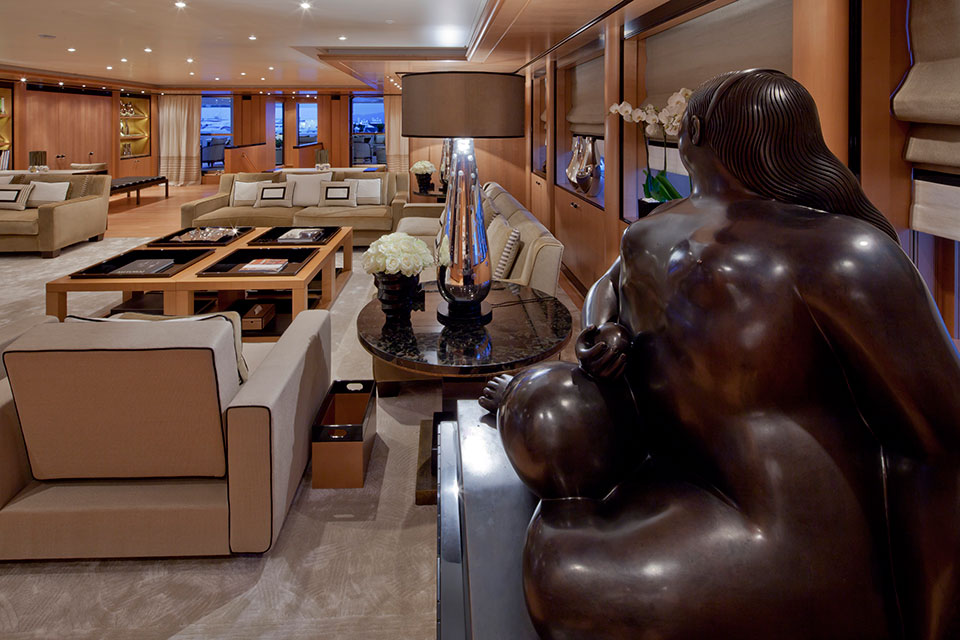
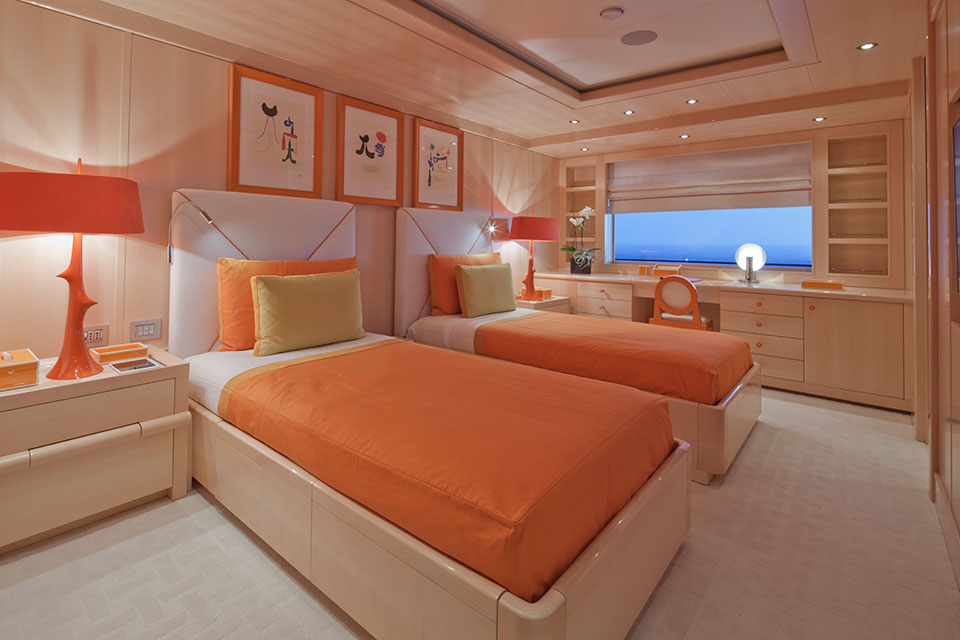

CRN yachts (8)
ferretti group (22)
PRODUCT LIBRARY
a diverse digital database that acts as a valuable guide in gaining insight and information about a product directly from the manufacturer, and serves as a rich reference point in developing a project or scheme.








